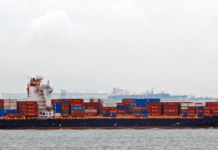In testimony on Friday, Aug. 24, before the United States Trade Representative (USTR) in Washington, D.C., the American Association of Port Authorities (AAPA) will urge the federal government to consider the negative impacts that burdensome tariffs would have on port and other trade-related American jobs nationwide, including the effects of likely retaliatory responses.
“The impact of expanding Section 301 tariffs on cargo and equipment moving through American ports would be significant,” said AAPA President and CEO Kurt Nagle, who will testify on behalf of the ports association as part of Panel 38 during the USTR’s Section 301 tariff hearings, Aug. 20-27. “Including the additional $200 billion proposed, the total Section 301 tariffs on Chinese commodities and China’s retaliatory responses, to date, would cover 8.4 percent of trade through America’s ports by value.”
At $4.6 trillion a year, the value of cargo activities at America’s seaports are significant drivers of the U.S. economy, supporting more than 23 million American jobs and generating over $320 billion in annual federal, state and local taxes. All but 1 percent of the nation’s overseas trade moves through its maritime facilities.
In addition to citing the negative impacts on imports, exports and jobs that are likely to occur by increasing U.S. trade tariffs, during his testimony, Mr. Nagle will request that the multi-million-dollar container cranes that U.S. ports have on order and are considering purchasing from Chinese factories, in which there are no American-made alternatives, be exempt from tariffs. He will also request that USTR exempt cargo-handling yard equipment at ports that have Harmonized Tariff Schedule codes that are specifically referenced in the Section 301 tariffs expansion proposal.
Overall, more than 350 people are slated to testify during the six days of hearings.








